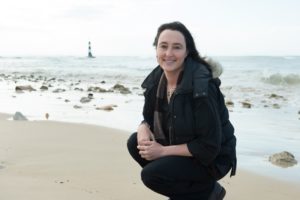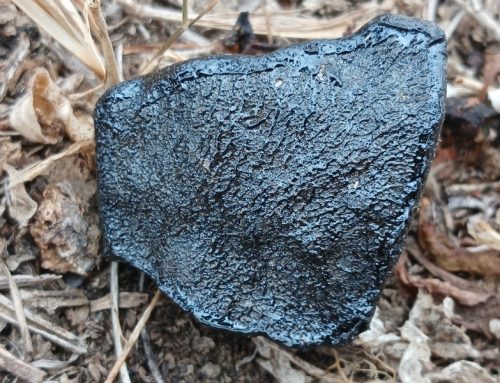
Stocks of some of our iconic angling fish species – such as red and white steenbras, black musselcracker, dageraad, kabeljou (kob) and seventy-four – are now so overexploited that they fall within the red list of threatened species as tracked by the International Union for the Conservation of Nature (IUCN).
Professor Nadine Strydom a marine biologist at Nelson Mandela University in Port Elizabeth wastes no time getting to the heart of the crisis. “Many coastal linefish species can live for over 30 years but because of over-fishing, their populations have either collapsed or the numbers of older, mature adults have dangerously plummeted. Their survival response is that the smaller, younger fish are becoming sexually mature at a younger age, which is not good for the species because they do not produce nearly the same amount or size of eggs which affects the survival of offspring.
“Less than 0.1% of all spawned, fertilised linefish eggs make it through to adulthood. If we look at the dusky kob as an example, at 10 years it can produce 4000 eggs per spawning season once a year and only 0.1% or 4 of their offspring will survive to adulthood under natural conditions. A 30-year-old dusky kob can produce 15 million eggs per spawning season once a year and 0.1% will survive, which is 15 000 fish.”
That’s an alarming eye opener, and there are many. Another example she provides is the black musselcracker (commonly called the ‘poenskop’). The entire population is female for the first 18 years of their lives and become males thereafter. Targeting the largest, mature fish completely derails the species’ sex ratios.
These examples illustrate the importance of Prof Strydom’s research, which uniquely explores fish reproduction across the inseparable matrix between wetlands, rivers, estuaries and the ocean. An NRF C-rated scientist, her work also forms part of the SARChI Shallow Water Ecosystems Research Chair at the university, chaired by Professor Renzo Perissinotto. “Shallow water ecosystems are defined as anything less than 20m of water depth,” she explains.
Her speciality, which is a scarce skill worldwide and she is Africa’s leading expert in this area, is focused on the early developmental stages of fishes that are so tiny they can only be viewed under a microscope. She tracks the larvae of fishes – monitoring their movement from the sea (where fish spawn) to the surf zone (where fish larvae are part of the plankton) to estuaries (where they grow into juvenile fish) and in some cases, even up-river where certain marine fish make use of unique nursery areas.
Her research on the larval stages of temperate southern African fish species spans a geographic study area extending from the middle of the Transkei coast all the way to Angola.
Why this research is so important, is because an understanding of fish larvae and juvenile survival can help with predictions about the size of future fish populations. “It’s a well-known scientific phenomenon that the success of any fish population is underpinned by the success of the larval phase, which is directly related to environmental conditions, habitat threats such as pollution and overharvesting of breeding adults.
Because we understand how devastating it is to remove the oldest fish, which are the best breeders, producing larger eggs and stronger offspring, part of our work is to encourage anglers to release the prime stock they catch.”
There are approximately 2.5 million active recreational anglers in South Africa from every socioeconomic, age and gender group. They play a major role in conservation of our fish stocks. The definition of recreational angling ranges from catching fish from the shore to catching from rowing boats or ski boats or with spear guns.
While the Department of Agriculture, Forestry and Fisheries monitors the catches of the 22 commercial fisheries in South Africa, there is inadequate effort in the monitoring of the catches in recreational angling, other than the number of permits sold and various surveys with fishers along our large coastline.
“Policing of recreational fishing is almost non-existent. People are taking undersized fish and taking more than they are legally allowed and our natural resources are struggling to recover from the pressure,” says Prof Strydom.
An important part of her work is to educate the fishing and coastal communities about fish, their life cycles, pollution and how we are directly threatening the sustainability of species which feed and support millions of people and are vital to the functioning of our ecosystems.”
She is on the management committee of the Swartkops Conservancy, an environmental education NGO in the Nelson Mandela Bay Metro. They are on a major engagement drive to meet with citizens living in the vicinity of estuaries to talk about sewerage, industrial and agricultural pollution, plastic and microplastics, which are posing a major risk to our marine life. She gives presentations and provides educational material to coastal communities and schools about overharvesting of resources and how pollution affects river systems and estuaries and ultimately the food we eat.
In 2016, Prof Strydom studied the effects of agricultural pollution on fishes in Eastern Cape estuaries that are experiencing algal blooms or eutrophication, a global research focus. “South Africa is lagging behind in this but the knock on effects of poor water quality in the environment is critical to integrated systems management,” says Prof Strydom.
She is also pioneering the use of specialised biochemical analyses used in northern hemisphere fisheries and applying this to ecology in estuaries in South Africa in collaboration with GEOMAR Research Institute in Germany. “We are using a fisheries tool in an ecological context to understand the body condition of fish in nursery areas that are under threat waters polluted by agricultural runoff and sewerage,” she explains.
PhD student Daniel Lemley, who is being supervised by the Director of the Institute for Coastal and Marine Research (CMR) Professor Janine Adams, has found that algal blooms from sewerage differ to those from agricultural nutrients or industrial pollution. Together with Prof Strydom they are researching their respective effects on the food chain in estuaries.
Prof Strydom’s work has already shown that young fishes that are being consumed in the recreational fishery on the Swartkops Estuary are contaminated with heavy metals such ascadmium. Fishes that are contaminated in their nursery areas subsequently swim to neighbouring estuaries as adults where the contamination is extended.
Another area of concern that falls within Prof Strydom’s research domain is the shortage of freshwater flow from the river system into estuaries because of large dams like those on the Kariega, Bushmans and Krom rivers. The inflow of fresh water is essential to estuary health. “Many people don’t realise the life link between rivers and estuaries is necessary for marine ecosystem survival. Many of our key linefish species use estuaries as nurseries, including the Dusky Kob, White steenbras, Garrick, Spotted grunter and many others,” Prof Strydom explains.
“Many fish species also cross multiple habitats in their lives. The moonies, for example, spawn at sea, and use the estuaries and mangroves as their nursery areas. As juveniles they can even move up rivers and feed on insect larvae and when they reach maturity they go back out to sea.”
In Prof Strydom’s field it often takes years to gather the different parts of the life cycle puzzle for different species and put them together to start understanding the bigger picture of how fishes use their environment from hatching to adults, many of which become part of fisheries. South Africa has exceptional marine biodiversity with approximately 2700 fish species; many are endemic and are found only in southern Africa and our knowledge of the full life cycle of many fish species is still unknown.
“There is so much that still needs to be investigated about even our best known coastal fishes. Key aspects of their biology and ecology are still unknown such as where they are spawning. We are busy with cutting edge research but at the same time we are trying to plug the leaking holes created by pollution and over-fishing.”
What makes for a researcher of the year?
“You need to be a passionate thinker with a love for exploring and working in the unknown,” says Prof Strydom who was named Faculty Researcher of the Year in 2015 and the University’s Researcher of the Year in 2016.
“I’m constantly asking questions about how the natural environment works and how fishes function in their natural habitat and in response to human pressure – this is extremely important from a biodiversity, harvesting and food security perspective.”
Prof Strydom is also committed to growing the number of postgraduate students in marine biology and encourages publishing all her science with students. Recent student work with graduated Dr Paula Pattrick in the journal, ‘Marine Ecology Progress Series’– an international marine science journal has made some important advances in understanding fish spawning. In the article entitled: ‘Predicting spawning locations and modelling the spatial extent of post-hatch areas for fishes in a shallow coastal habitat in South Africa’, results indicate ‘that spawning occurs closer to shore than what was previously thought. Eggs and larvae typically remained in close proximity to their spawning origin. Larval fish distributions, although variable amongst all study species, correspond to known adult distributions and potential reef habitats in the study region.’
Prof Strydom confirms that many nearshore habitats are underexplored and are extremely important spawning and nursery areas for fishes that we are relying on for food. The value of the Eastern Cape as a fish nursery hotspot in South Africa is underestimated and there are a plethora of habitats along the coast that are poorly studied often because they are dangerous to work in. The province is home to the large Agulhas Bank in the ocean and the most open estuaries in the country, as well as many small bays and surf zones that are key fish areas. All this needs to be taken into consideration in marine spatial planning initiatives that serve fish conservation in a changing world.




